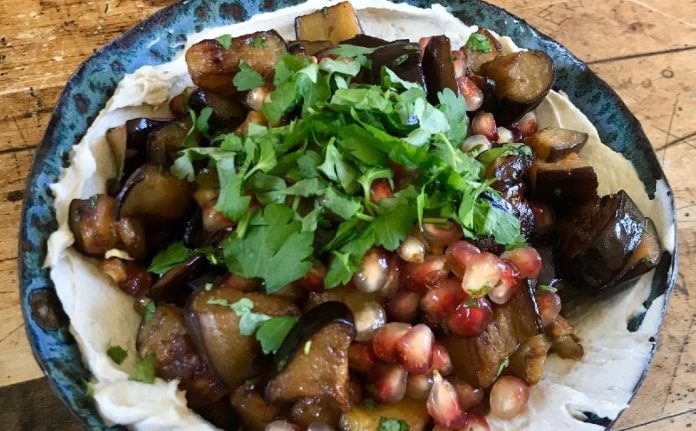On 23rd June, the World Food Programme (WFP) invited people at home to cook along to a Virtual Chef’s Table. To celebrate World Refugee Day, the theme for the event was People and Food on the Move.
The event was hosted by Arthur Potts-Dawson, chef and WFP advocate. Arthur was joined by Imad Alarnab, a Syrian chef and refugee, Malish James, an entrepreneur, aspiring photographer and refugee living in the Bidibidi Refugee Camp in Uganda, Gladys Kyotungire, Business Analyst and Activist and Jane Howard, Head of Communications, Marketing and Advocacy at WFP.

“In 1999 I opened my first restaurant in Damascus, in 2006 I opened my second and in 2009, my third. But in March 2015 I lost it all in just six days … Up until then I had regular concerns, just like anyone else … What if I couldn’t get 200 kilos of chicken for tomorrow? … I never considered the possibility of war”.
In July 2015, Imad fled Syria and, three months and ten countries later, he arrived in London. Imad spoke passionately about what it meant to him to be a refugee. “When people ask what’s it like to be a refugee, I say it’s not a question of that. I didn’t choose to be a refugee. I’ve been forced to build a new life. Losing everything is not anyone’s choice.”
Since March 2017 Imad has hosted countless pop-up events in support of charities like Help Refugees UK. However, for Imad, cooking is not just a job. Food is central to his Syrian identity and his connection with his homeland. “Before the war in Damascus, you had no trouble getting organic produce. Nowadays, I have smell-induced memories of Syria, brought about by the smell of good tahini or organic lemon juice.”
Those who had cooked along tucked into the tahiniat beitenjan as Jane Howard, Malish James and Gladys Kyotungire joined the event to discuss their experience of food and place.
Jane began by talking about the important role of the World Food Programme in providing food aid to displaced people across the world and achieving SDG 2, Zero Hunger. “100 million people are fed each year by WFP. 10 million of those people are refugees”.
Imad similarly spoke of the hunger he saw as he fled Syria. “Throughout that journey, I saw a lot of people, especially in Calais and in Greece, who were in great need. Organisations such as WFP make a huge difference”.
Each panelist however, wanted to distinguish between food for survival and food that might speak to cultural identity.
Gladys spoke of the importance of this distinction in her culture. “In Uganda we say ‘I want to have a meal’. For Ugandans, this isn’t just a meal. It means food that’s connected to home, to our roots”.
Like Imad, Gladys found food could transport her back to Uganda after she left in 2007. “When I felt homesick I would make the food I made in Uganda. It would make me feel as if I was with my people”.
James, who fled from South Sudan in August 2016, spoke of the different kind of role food had played in his identity. “I have left behind some of my identity. Before the war in South Sudan, I was independent and I was able to feed my family but you can’t grow crops in a refugee camp.”
While food is a basic survival necessity, it can mean a lot more. Food is deeply entwined with both our national and personal identities. Above all, food can transcend physical boundaries. It offers a way to learn and interact with someone’s culture and provides refugees with an unbreakable connection to home.
Additional links:



